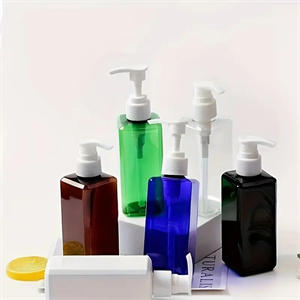When did shampoo bottles become plastic?
May 31, 2024
Shampoo bottles have become an indispensable part of our daily lives. We use them regularly without giving much thought to their material composition. However, have you ever wondered when shampoo bottles transitioned from their traditional material to plastic?

In the early days, shampoo was mainly sold in glass bottles. These bottles were sturdy and had an elegant appearance. However, they were also heavy, fragile, and expensive to produce. As a result, they were not the most practical choice for mass production and distribution.
The turning point came in the mid-20th century when plastic started gaining popularity as a packaging material. The invention and widespread use of polyethylene, a versatile and lightweight plastic, revolutionized the packaging industry. Shampoo manufacturers quickly recognized the benefits of using plastic bottles. They were not only cheaper to produce but also lighter, making them easier to transport and handle.
The exact timeline of when shampoo bottles made the complete transition to plastic is a bit blurry. However, it is believed that the shift began in the 1950s and gained momentum throughout the following decades. By the 1970s, plastic bottles had become the norm in the shampoo industry.
The introduction of plastic bottles brought several advantages. First and foremost, they were more durable than their glass counterparts, reducing the risk of breakage during shipping and handling. This durability also made them more convenient for consumers, as they did not have to worry about the bottle shattering in their bathroom. Additionally, plastic bottles allowed for more innovative and ergonomic designs, making them easier to use and store.
However, the rise of plastic shampoo bottles also raised concerns about their environmental impact. Plastic waste has become a significant global issue, with single-use plastics polluting our oceans and harming marine life. In recent years, there has been a growing movement to reduce plastic consumption and find more sustainable alternatives.
As a result, some shampoo manufacturers have started exploring eco-friendly options. They have introduced shampoo bars, which are solid bars of shampoo that eliminate the need for plastic bottles altogether. These bars are not only packaging-free but also require less water for production and have a smaller carbon footprint.
In conclusion, the transition from glass to plastic shampoo bottles began in the mid-20th century, driven by the advantages offered by plastic in terms of cost, durability, and convenience. However, the environmental concerns associated with plastic waste have led to a push for more sustainable alternatives, such as shampoo bars. As we move forward, it is crucial to find a balance between convenience and sustainability to ensure a healthier planet for future generations.
